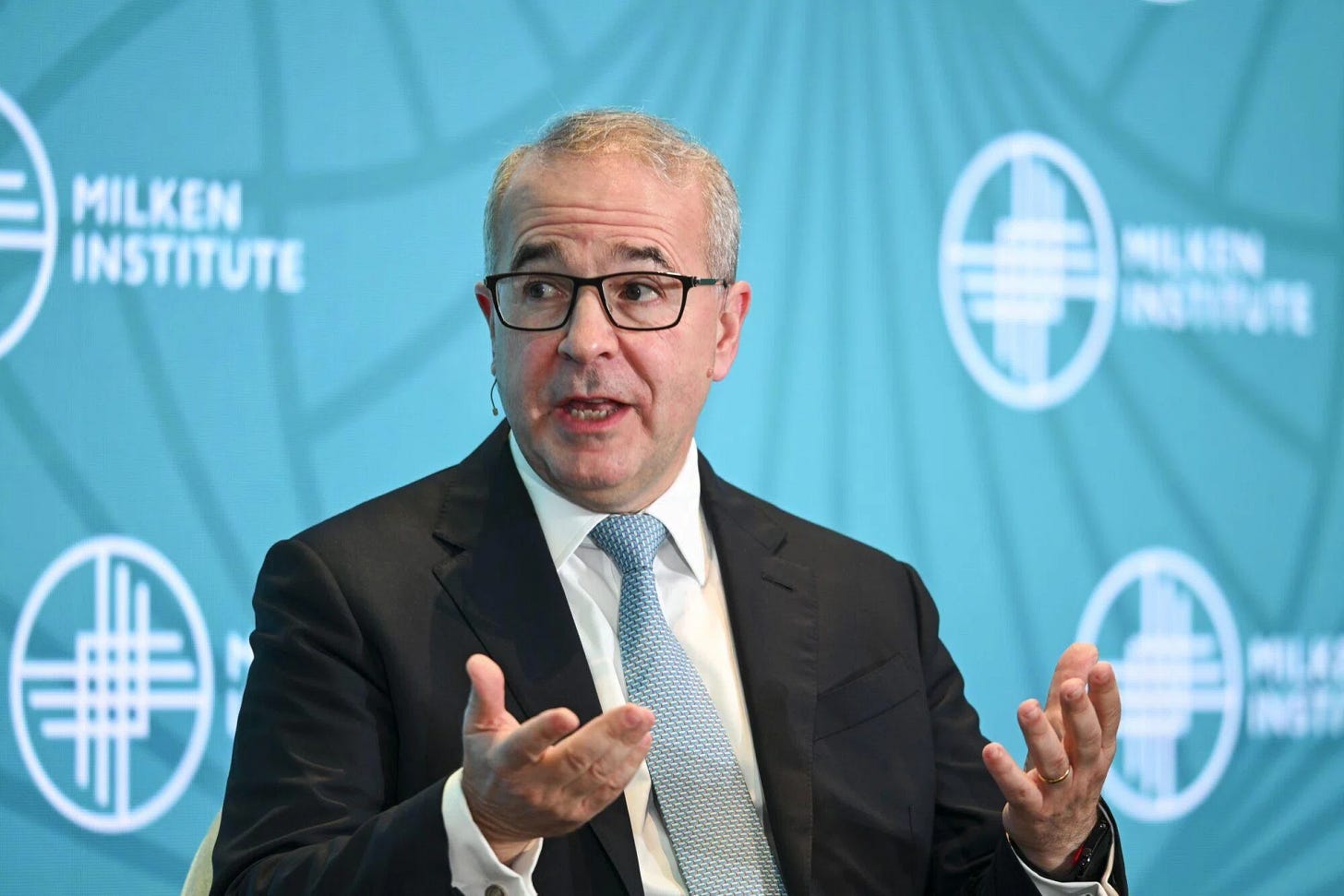ETFs: The Smart Investor’s Shortcut to Diversification
How today’s investors, from retail to high-net-worth, are using low-cost ETFs to access global markets, top sectors, and emerging trends
Weekly buzz
Asia draws US$100 billion in capital as investors diversify beyond US: Goldman executive
“There is incremental flow in this part of the world. I think it’s important to put it in the context of a diversification movement, not an exit movement.” said Kevin Sneader, president of Asia Pacific ex-Japan at Goldman Sachs. PHOTO : BLOOMBERG
Think of the investment market as a big cake, each bite being a financial instrument, say stocks. ETFs or Exchange Traded Funds shine by giving you the opportunity to invest in a piece of that cake instead of individual bites. They are considered lower risk than other investments because of the variety of financial instruments one can contain.
What’s more exciting from a wealth standpoint is that not all ETFs track the same piece. Some, for example, might track the S&P 500 like SPDR S&P 500 ETF Trust (SPY), which includes the top 500 companies with the biggest market capitalization in the world.
High-net-worth investors like ETFs just as kids like candy. They are attracted to typically lower fees, instant diversification, and access to global and thematic opportunities. ETFs are like an investing superpower, helping wealthy Canadians allocate across U.S. tech, emerging markets, renewable energy, and more—all in a single trade.
“Don’t look for the needle in the haystack. Just buy the haystack!”
— John C. Bogle
There are 2 types of ETFs:
Passive ETFs
Track a specific index (e.g., S&P 500, NASDAQ-100, MSCI World).
Goal: replicate the performance of the index.
Usually low-cost because they don’t require active stock picking.
Examples: VGT (Vanguard Technology ETF), SPY (S&P 500 ETF), TEC (Global Tech Leaders ETF).
Active ETFs
Managed by fund managers aiming to beat a benchmark.
May rotate sectors, regions, or pick individual stocks.
Typically higher fees, but can add more returns (alpha) in specialized sectors (like AI).
Example: thematic or innovation-focused ETFs like ARKK (ARK Innovation ETF).
Tip: Choose what applies to your risk tolerance and long-term goals. Passive ETFs are less risky since there is less volatility in management.
When buying an ETF, you should always consider the costs it may incur.
Most ETFs have an annual fee charged by the fund.
Passive ETFs often range 0.03%–0.20%
Active ETFs 0.50%–0.80%
Example: If an ETF provides a 10% return on your $10,000 investment, you are earning $1,000 (unrealized gains). With a 0.2% commission, the fund takes $20.
If the ETF invests in foreign assets but is hedged to CAD, there may be additional costs.
Example: If you buy a United States–specific ETF like Vanguard Information Technology ETF (VGT), you risk losing money if you sell and convert your earnings to CAD due to currency fluctuations.
Tip: Invest in a hedged ETF like Horizons Global Technology Leaders Index ETF (TEC), which is the Canadian version of VGT.
Caveat: You should consider paying slightly higher fees (0.05%–0.1%) since the ETF protects you against currency fluctuations.
Other fees to consider:
Trading Commission: Cost of buying/selling shares on an exchange (some brokers offer commission-free ETFs).
Bid-Ask Spread: Difference between buying and selling price, usually very small for large, liquid ETFs.
Takeaway Zone
ETFs offer diversification, which can reduce certain risks.
Passive ETFs = index-tracking, stable, low-fee.
Active ETFs = potential for alpha, higher fees, sector or thematic focus.
Currency hedging reduces FX (foreign exchange) risk but increases small costs.
Always check expense ratios, liquidity, AUM, tracking error, and top holdings before investing.
References
Here are a few key references we used. For readability, we’ve highlighted the most useful sources, feel free to explore further if you want more detail.
Investopedia – Exchange-Traded Fund (ETF): What It Is and How to Invest
🔗Read moreMorningstar – What Is the Total Cost of Owning an ETF?
🔗 Explore the detailsMorningstar – Do Currency-Hedged ETFs Have Merit for the Long Term?
🔗 Learn moreBloomberg – ETFs
🔗Visit Bloomberg’s ETF sectionInvestopedia – How Are ETF Fees Deducted?
🔗 Check out Investopedia’s ETF fees coverage



